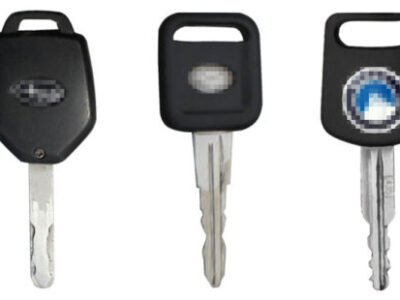
Ford Puma Tyre Pressure Guide (2020–2025): Complete Reference for All Models

Maintaining the correct tyre pressure on your Ford Puma is essential for performance, fuel efficiency, and safety. Below, we present a complete, accurate, and easy-to-follow guide covering every model and wheel size from 2020 to 2025, including normal and laden load conditions.
- 🚗 Overview: Why Tyre Pressure Matters
- 🧭 Ford Puma Tyre Pressure Table (2020–2025)
- ⚙️ How to Check and Adjust Tyre Pressure
- 🛞 Recommended Tyre Pressure for Ford Puma ST (Performance Model)
- ⚠️ Tyre Pressure Warning Light (TPMS) Reset
- 💡 Seasonal Tyre Pressure Tips
- 🔍 Expert Recommendations
- 🧾 Summary Table by Driving Scenario
- ✅ Key Takeaways
🚗 Overview: Why Tyre Pressure Matters
Properly inflated tyres ensure:
- Consistent road grip and braking performance
- Improved fuel efficiency
- Even tyre wear and extended lifespan
- Optimal driving comfort and stability
Incorrect pressures—either underinflated or overinflated—can cause handling issues, increased fuel consumption, and faster tread wear.
You may be interested in reading Ford Puma Dashboard Warning Lights and Symbols (2001–2025)
Ford Puma Dashboard Warning Lights and Symbols (2001–2025)🧭 Ford Puma Tyre Pressure Table (2020–2025)
The table below lists the official Ford-recommended tyre pressures (in bar and PSI) for non-ST Ford Puma models based on tyre size and load condition.
| Year | Tyre Size | Normal Load (Front) | Normal Load (Rear) | Laden (Front) | Laden (Rear) |
|---|---|---|---|---|---|
| 2020–2023 | 205/65 R16 95H | 2.4 bar (35 PSI) | 2.1 bar (30 PSI) | 2.4 bar (35 PSI) | 2.6 bar (38 PSI) |
| 2020–2023 | 215/55 R17 94V | 2.4 bar (35 PSI) | 2.1 bar (30 PSI) | 2.4 bar (35 PSI) | 2.6 bar (38 PSI) |
| 2020–2023 | 215/55 R17 98W XL | 2.4 bar (35 PSI) | 2.1 bar (30 PSI) | 2.4 bar (35 PSI) | 2.6 bar (38 PSI) |
| 2020–2023 | 215/50 R18 92V | 2.3 bar (33 PSI) | 2.1 bar (30 PSI) | 2.4 bar (35 PSI) | 2.6 bar (38 PSI) |
| 2020–2023 | 215/50 R18 96V XL | 2.3 bar (33 PSI) | 2.1 bar (30 PSI) | 2.4 bar (35 PSI) | 2.6 bar (38 PSI) |
| 2020–2023 | 225/40 R19 93V XL | 2.3–2.4 bar (33–35 PSI) | 2.1 bar (30 PSI) | 2.5–2.6 bar (36–38 PSI) | 2.6 bar (38 PSI) |
Note: Always double-check the pressure chart inside your driver’s door frame or fuel cap—minor variations may exist depending on regional specifications or load configurations.
⚙️ How to Check and Adjust Tyre Pressure
Step 1: Locate Your Recommended Pressure
- Check the door jamb sticker or your owner’s manual for tyre-specific pressures.
- Ensure values match the tyre size fitted to your vehicle.
Step 2: Measure Current Pressure
- Use a digital tyre pressure gauge or built-in car sensor (TPMS) to read the current PSI or bar values.
- Check when tyres are cold (before driving or after sitting for at least 3 hours).
Step 3: Inflate the Tyres
- Remove the valve cap.
- Attach the air hose or tyre pump to the valve.
- Inflate gradually, monitoring the pressure with a gauge.
- Recheck each tyre and replace the valve caps securely.
Step 4: Deflate if Necessary
- If a tyre exceeds the recommended level, gently press the valve stem to release air.
- Use short bursts to avoid over-deflation.
- Recheck after every adjustment for precision.
🛞 Recommended Tyre Pressure for Ford Puma ST (Performance Model)
While the above applies to standard models, Ford Puma ST uses sport-oriented tyres and requires slightly higher pressures:
You may be interested in reading Ford Puma Dashboard Warning Lights and Symbols (2001–2025)
Ford Puma Dashboard Warning Lights and Symbols (2001–2025) How to Drive a Ford Puma: Complete Step-by-Step Guide for New Owners
How to Drive a Ford Puma: Complete Step-by-Step Guide for New Owners| Tyre Size (ST) | Front (bar / PSI) | Rear (bar / PSI) |
|---|---|---|
| 225/40 R19 93Y | 2.5 bar (36 PSI) | 2.3 bar (33 PSI) |
This setup ensures enhanced cornering performance and optimal grip for spirited driving.
⚠️ Tyre Pressure Warning Light (TPMS) Reset
If the Tyre Pressure Monitoring System (TPMS) light stays on after adjusting pressures:
- Turn the ignition ON without starting the engine.
- Press the menu button on the steering wheel.
- Select “Driver Assist” → “Tyre Monitor” → “Reset”.
- Confirm and drive for a few minutes until the system recalibrates.
If the warning persists, inspect for punctures or faulty sensors.
You may be interested in reading Ford Puma Dashboard Warning Lights and Symbols (2001–2025)
Ford Puma Dashboard Warning Lights and Symbols (2001–2025) How to Drive a Ford Puma: Complete Step-by-Step Guide for New Owners
How to Drive a Ford Puma: Complete Step-by-Step Guide for New Owners How to Turn Off the VDC Light on a Nissan Xterra: Complete Expert Guide
How to Turn Off the VDC Light on a Nissan Xterra: Complete Expert Guide💡 Seasonal Tyre Pressure Tips
| Season | Recommendation |
|---|---|
| Winter (Cold Weather) | Increase pressure by 0.2 bar (≈3 PSI) to compensate for air contraction. |
| Summer (Hot Weather) | Check pressures more frequently—hot air expands, potentially overinflating tyres. |
| Long Road Trips | Inflate to laden values for improved stability and reduced rolling resistance. |
🔍 Expert Recommendations
- Check tyre pressures monthly or before any long journey.
- Never rely solely on visual inspection—underinflation is often invisible.
- Replace valve caps promptly to prevent air leaks.
- Rotate tyres every 10,000–12,000 km for even wear.
🧾 Summary Table by Driving Scenario
| Condition | Front Tyres | Rear Tyres |
|---|---|---|
| Normal daily use | 2.3–2.4 bar (33–35 PSI) | 2.1 bar (30 PSI) |
| Fully loaded vehicle | 2.5–2.6 bar (36–38 PSI) | 2.6 bar (38 PSI) |
| Motorway driving | +0.1 bar (≈1.5 PSI) above normal | +0.1 bar (≈1.5 PSI) above normal |
| Cold weather | +0.2 bar (≈3 PSI) above normal | +0.2 bar (≈3 PSI) above normal |
✅ Key Takeaways
- Maintain pressures as per tyre size and load for safety and comfort.
- Inflate tyres when cold, not immediately after driving.
- Reset the TPMS after any change.
- Regular checks improve fuel efficiency and tyre longevity.
If you want to know other articles similar to Ford Puma Tyre Pressure Guide (2020–2025): Complete Reference for All Models you can visit the category Tips.
Deja una respuesta






More content of your interest